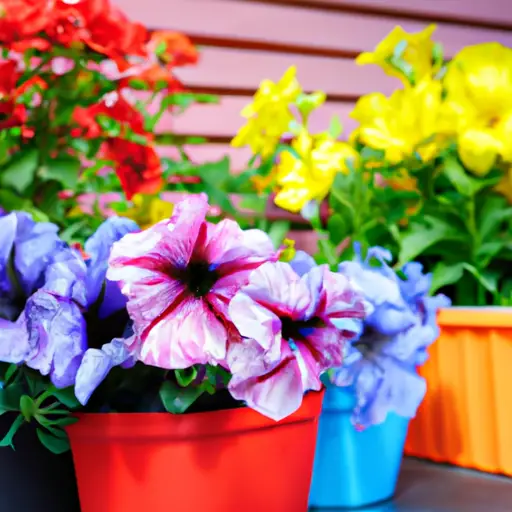How to Grow Flowers Successfully in Containers
Container gardening is a great way to add color and beauty to any space, whether you have a small balcony or a sprawling garden. Growing flowers in containers allows you to have control over the growing conditions, making it easier to create an ideal environment for your plants. With the right techniques and care, you can enjoy a vibrant and flourishing display of flowers throughout the year. In this article, we will explore the steps and considerations involved in successfully growing flowers in containers.
1. Choose the Right Container:
The first step in growing flowers successfully in containers is selecting the right pots. Ensure that your chosen containers have adequate drainage holes at the bottom to prevent waterlogging. The size of the container should be proportionate to the plant’s size when fully grown; too large or too small pots can hinder growth. Additionally, consider using containers made of materials like plastic or fiberglass that are lightweight and weather-resistant.
2. Select Suitable Flowers:
Choosing suitable flowers for container gardening is crucial for success. Opt for plants that have compact and bushy growth habits rather than those with long sprawling stems. Some popular choices include petunias, geraniums, marigolds, impatiens, and pansies, among others. Make sure to choose flowers that thrive well in your climate zone as this will result in healthier plants.
3. Soil Preparation:
Good soil quality is essential for healthy flower growth in containers. Use high-quality potting soil specifically formulated for container gardening as it provides balanced nutrients and allows proper drainage. Avoid using garden soil as it may contain weeds, pests, or diseases that could harm your plants.
4. Planting Techniques:
Before planting your flowers in containers, ensure that your pots are clean and free from any debris or remnants of previous plants. Fill the container with potting soil up to two-thirds of its height to allow sufficient space for root development.
5. Watering Schedule:
Proper watering is crucial for the success of container-grown flowers. The frequency of watering depends on various factors such as the type of plant, prevailing weather conditions, and container size. Generally, water your plants when the top inch of soil feels dry. Ensure thorough watering until it seeps out through the drainage holes but avoid overwatering, as it can lead to root rot and other water-related issues.
6. Fertilization:
Flowering plants in containers require regular feeding to maintain their blooming potential. Incorporate slow-release fertilizers into the potting soil during planting to provide a steady supply of nutrients over time. Additionally, use liquid fertilizers every two to three weeks during the growing season to promote healthy growth and abundant blooms.
7. Sunlight Exposure:
Most flowering plants thrive in full sunlight; however, some may require partial shade depending on their specific needs. Place your containers in an area that receives adequate sunlight according to the requirements of your chosen flowers. Balconies or patios that receive direct sunlight for a few hours a day are usually ideal for most flowering plants.
8. Pruning and Deadheading:
Regular pruning and deadheading play a crucial role in maintaining the health and appearance of container-grown flowers. Remove any dead or damaged foliage promptly to prevent disease spread. Pinch or trim back stems regularly to promote bushier growth and prevent leggy plants.
9. Pests and Disease Control:
Container gardening doesn’t make you immune from pests and diseases that can affect your flower’s health. Inspect your plants regularly for signs of pests such as aphids, mealybugs, or spider mites, and take appropriate measures to control them using organic pest control methods if possible.
10. Winter Care:
During colder months or frosty periods, it’s important to protect your container-grown flowers from extreme temperatures by moving them indoors or providing some form of insulation. Tropical or frost-sensitive plants may need to be overwintered indoors.
In conclusion, growing flowers successfully in containers requires careful consideration of various factors such as choosing suitable containers, selecting the right flowers, preparing the soil, watering correctly, providing adequate sunlight, and regular maintenance. With patience and proper care, you can create a stunning display of colorful blooms that will enhance any space and bring joy throughout the year. Get started on your container gardening journey and experience the beauty of flourishing flowers right at your doorstep!













